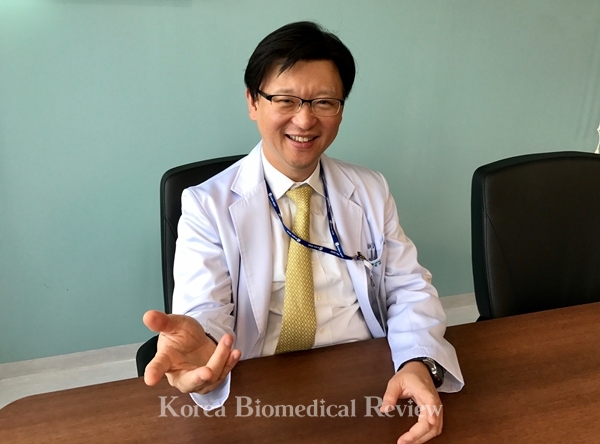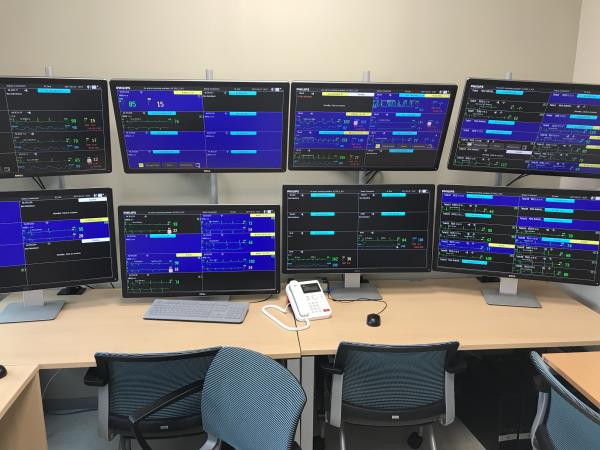Mediplex Sejong introduces AI program for 1st time in the world
Things once considered impossible until a distant future is becoming a reality with the help of Artificial Intelligence.
Sejong Mediplex Hospital, located in Gyeyang-gu, Incheon, introduced the “AEGIS” (cardiac Arrest Early warning alGorithm In Sejong hospital), an AI program which can predict cardiac arrests, in July. AEGIS was a coproduct of Sejong Mediplex and a startup company named VUNO Korea, which specializes in AI and medical images.
AEGIS can “deep learn” the big data through its AI program and can predict cardiac arrests 24 hours before their occurrences. AEGIS gathers the patient's breathing rate, cardiac rate, oxygen saturation, and blood pressure in real time data. Also if signs of danger are detected, it automatically informs them to the Electronic Medical Record (EMR) system.
Korea Biomedical Review met with Park Jin-sik박진식, who became the first hospital head ever to create such a program, as well as leading the process of implementation for AEGIS, for an exclusive interview.

Question: Why did you decide to create “AEGIS?”
Answer: Five out of every 1,000 hospitalized patients suffer from cardiac arrest, and four of them end up dead. Mediplex Sejong Hospital, which specializes in heart diseases, treats many patients with severity equal to tertiary general hospitals. This is why our medical team is always preparing for cardiac arrests. However, it is impossible for patients to fully recover, given that emergency steps are taken only after heart attacks occur. I had thought, ‘how good it would be if I could find invisible symptoms through AI and know the aggravating situation beforehand?’ From there I started to rack my brain to develop the program.
The problem was how to increase the accuracy of the prediction and detect heart arrests through early warning scores (EWS). As the go match between Lee Se-dol and Alpha-Go raised the public’s interest in AI and Deep Learning two years ago, I had come to be convinced it would be a new tool for analyzing algorithm behind the occurrence of cardiac arrests. So, with the introduction of EMR, we decided to develop an algorithm of the heart arrest with six years of data starting from 2010. Thus began the development of the AEGIS, with the help of VUNO Korea,
Q: How did you cooperate with VUNO Korea?
A: The hospital was responsible for data processing and academic part, while VUNO Korea took the technological part of artificial intelligence. Our partnership was academic-industrial cooperation. The hospital developed a research plan for developing predictive models, extracting and abstracting data needed from hospital computers. And VUNO Korea played the role of leveraging the task of identifying and refining activities, such as remodeling and refining algorithms.
Q: How is AEGIS different from MEWS (Medical Early Warning Scores) in regards to predicting cardiac arrests of patients?

A: The Aegis has 70-percent prediction accuracy and can also detect the cardiac arrest in patients with lower risks. Although a few studies indicated that the MEWS figures of a certain level or higher lead to cardiac arrests, doctors had to analyze every data, and the accuracy of that method was 55 percent or so. Also, there were problems where patients who were classified as “lower risk” by MEWS still had cardiac arrests. But AEGIS can make a real-time analysis of patients' biological data and show them on screen.
Q: What meaning does it have to predict a cardiac arrest 24 hours before?
A: Not only is the predicted turnaround time significant regarding accuracy but also it gives doctors time to take necessary measures before cardiac arrest happens. Since the data and the algorithms are analyzed before and after the arrests, the predicted accuracy of the time remaining for a specific patient can increase depending on the presumptions. However, if the forecast period is too short, doctors will have insufficient time to take adequate measures. So that is why we felt it safe to set the prediction time at 24 hours.
At the AEGIS control tower of Mediplex Sejong Hospital intensive care unit, a team of doctors and nurses always monitor the patients.
Q: How will you develop AEGIS?
A: Currently, AEGIS only uses data our hospital has. But if we can induce other hospitals to use their big data as well, AEGIS will be more accurate, and the algorithms will be more elaborate. We intend to develop an algorithm that will ultimately predict the cardiac arrests perfectly. To this end, we need to gather other hospitals’ big data so we can utilize, refine, and analyze the algorithms. When this process is complete, we believe that the commercialization of overseas exports will become possible.
Q: It appears likely to be applied to other areas, too.
A: I believe we can apply this to septicemia as well. Also, we will also develop an algorithm to monitor and predict patients whose condition is deteriorating to reduce the chances of their going to intensive care. I thought that if the patients had a proper care before and if they were able to detect patients early, they would not have to go to the intensive care unit. Now I believe that AI will make this a reality
Q: What are you doing to speed this process?
A: We are accumulating the necessary data. In addition to essential information such as blood pressure collected from patients, it is required to determine which data is needed. This will enable the AEGIS to have more sophisticated algorithms and serve as a useful database for creating new algorithms. A protocol is also being made to manage and scale the data. Currently, there are no departments exclusively responsible for it, but there are plans to expand the dedicated research staff to handle the data.

